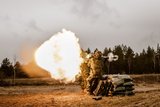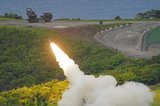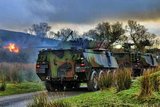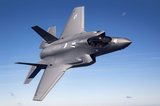Japan ends search for crashed F35 fighter jet
Japan called off its search for an F-35A on 4 June, almost two months after the stealth jet crashed into the sea sparking a scramble to recover the pilot and secrets onboard.
Defence Minister Takeshi Iwaya told reporters the search had been halted but that his teams were still investigating the cause of the crash, adding that F-35A operations in northern Japan had not yet resumed.
The ministry would also keep monitoring a wider area with underwater cameras ‘for the purpose of protecting classified military information,’ Iwaya said.
Experts say Japan and the US are keen to prevent sensitive debris from the plane being recovered by Russia or China, and Iwaya himself has admitted there were ‘a significant amount of secrets that need to be protected’ on the jet.
Some debris have been recovered, including the jet's tail, but neither the pilot's body nor the flight data recorder have been found.
The state-of-the-art fighter jet went missing on 9 April while flying 135km (85 miles) east of Misawa, northeastern Japan, on a training mission. The plane lost contact about 30 minutes after taking off from Misawa Air Base with three other aircraft.
It was the first reported crash by an F35-A, according to Japan's Air Self-Defence Force.
Japan is deploying F35-As, each of which costs more than ¥10 billion ($90 million), to replace its ageing F-4 fighters. They are a key part of Prime Minister Shinzo Abe's efforts to upgrade the nation's military capacity to meet changing power dynamics in East Asia, with China rapidly modernising its military.
More from Defence Notes
-
![Taiwan approved for purchase of $11 billion in weapons from US]()
Taiwan approved for purchase of $11 billion in weapons from US
The US State Department’s approval of a multi-billion-dollar sale of weapons to Taiwan includes tactical mission networks equipment, uncrewed aerial systems, artillery rocket systems and self-propelled howitzers as well as anti-tank guided missiles.
-
![Ireland spells out $2.3 billion shopping list in five-year defence spending plan]()
Ireland spells out $2.3 billion shopping list in five-year defence spending plan
Ireland’s multi-annual investment in capital defence spending is set to rise from €300m in 2026 to €360m in 2029–2030 with major upgrades across land, air, maritime and cyber domains.
-
![US National Security Strategy prioritises advanced military capabilities and national industry]()
US National Security Strategy prioritises advanced military capabilities and national industry
The 2025 NSS has emphasised investment in the US nuclear and air defence inventory and national industry, but it leaves multiple unanswered questions on how the White House will implement this approach.
-
![Canada set to look away from its neighbour and across the Atlantic for partners]()
Canada set to look away from its neighbour and across the Atlantic for partners
While non-EU UK struggles to join the Security Action for Europe initiative, which provides loans for defence programmes, Canada has become the first country outside Europe to get access – and did so for a nominal fee.
-
![NATO experiments with solutions to integrate networks, AI and uncrewed systems]()
NATO experiments with solutions to integrate networks, AI and uncrewed systems
During the latest edition of the NATO DiBaX, the alliance tested multiple capabilities to inform requirements for future efforts.

























